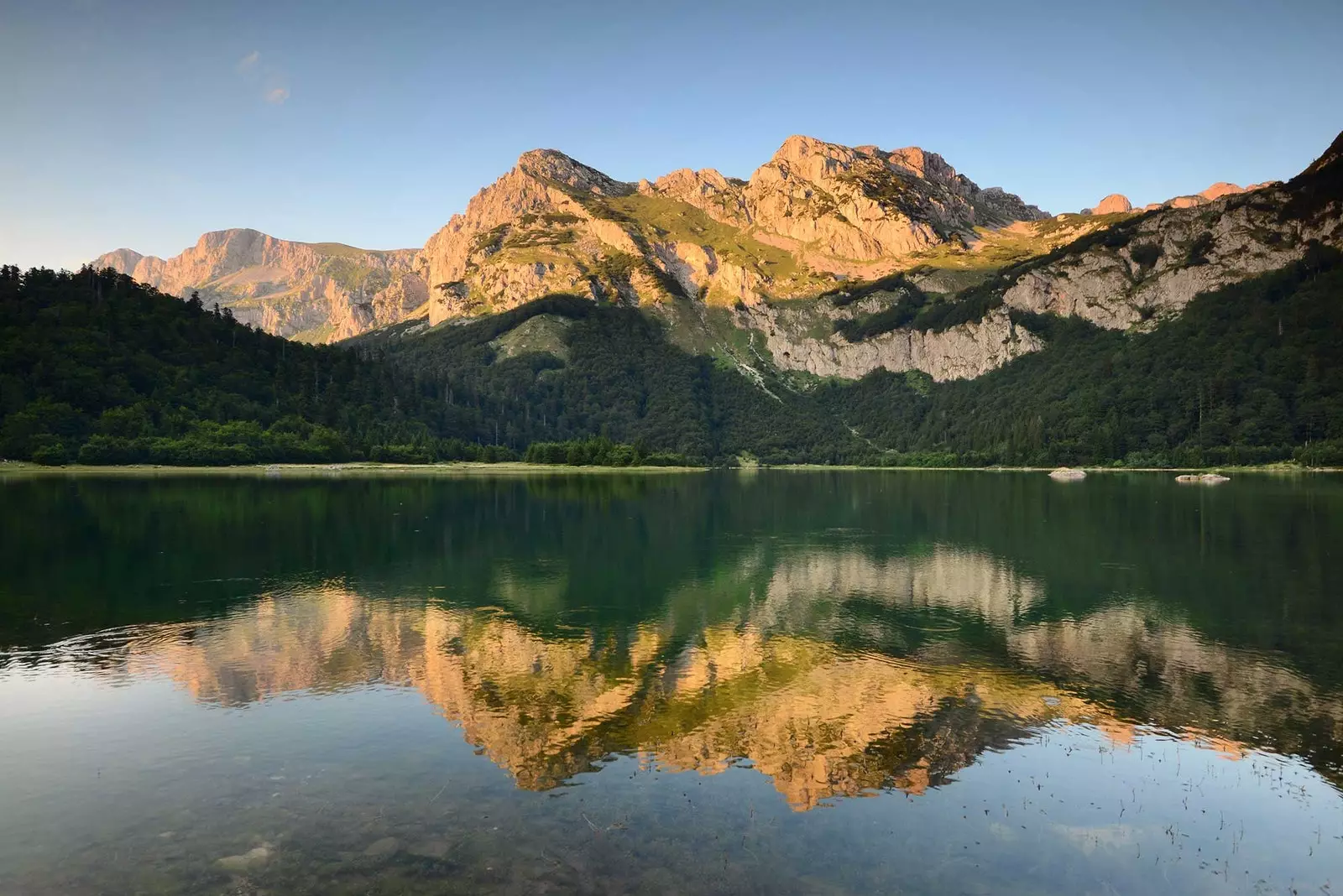
Bosnia is brimming with nature and surely many of its corners are still unknown to you.
The Balkans are in fashion . Be stunned by the spectacular nature of the ** Bay of Kotor (Montenegro) **, eat a delicious roast lamb in **Jablanica (Bosnia) ** or get lost in the alleys of the bustling and increasingly underground Belgrade , is becoming common. They are relatively cheap, close destinations that offer endless possibilities. Monuments, nature, leisure and fun at an affordable price and a couple of hours from home, what more could you ask for?
One of the destinations that has gained popularity in recent years has been the spectacular Bosnia . Touched to death and bruised by the Balkan war that led to the disintegration of the former Yugoslavia in the 1990s, the wounds of massacres that should never have existed are still visible. The shrapnel in houses and buildings does not go unnoticed and it is impossible not to shudder walking through the streets of ** Sarajevo or Mostar **.
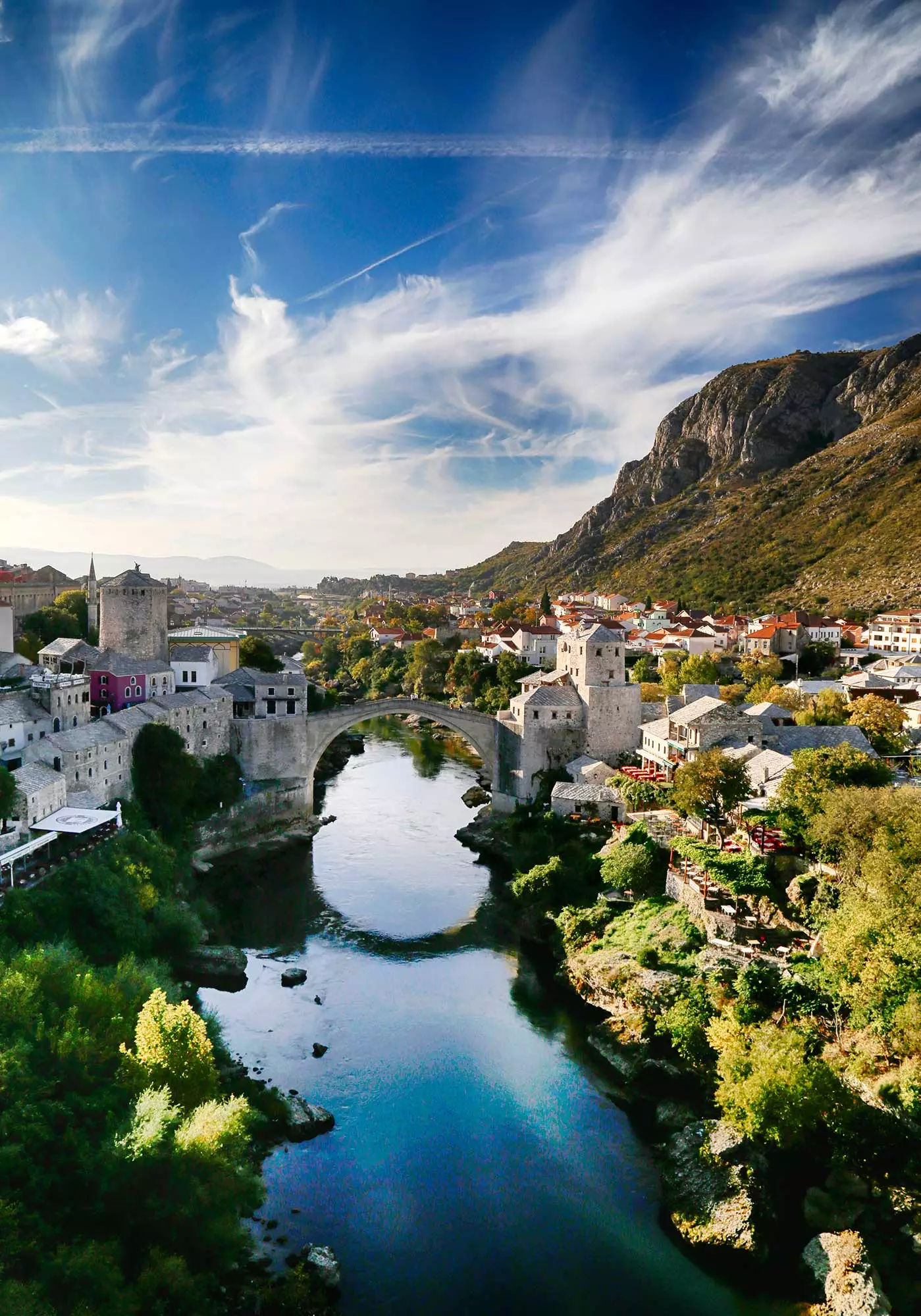
Mostar is one of the jewels of Bosnia.
The country is advancing at a good pace and without pause. ** Sarajevo tries to leave behind the longest military siege ** of a city in modern history (1,425 days), from April 5, 1992 to February 29, 1996 and it is beginning to be sensed how the modern and cosmopolitan city that it was before the war . Recently, the first Pride march took place in the Bosnian capital, in which some 2,000 people participated.
Beyond the war, and beyond Sarajevo and Mostar, the country's most popular tourist destinations, Bosnia offers nature, history and folklore and the traveler should not leave the country without exploring it thoroughly..
WALKS IN SUTJESKA NATIONAL PARK
Bosnia is a country of mountains, forests, rivers and streams . Although there are many places to get lost in the exuberant nature, such as the Tajan Nature Park , the A National Park , wave Hutovo Blato nature reserve , maybe the most impressive site is the Sutjeska National Park , which hosts the highest peak in the country, Mount Maglic (2,286 meters) and one of the last primary forests on the European continent – and the best preserved –, the Perućica Primeval Forest (1,434 hectares) which, by the way, can only be explored if accompanied by the park rangers.
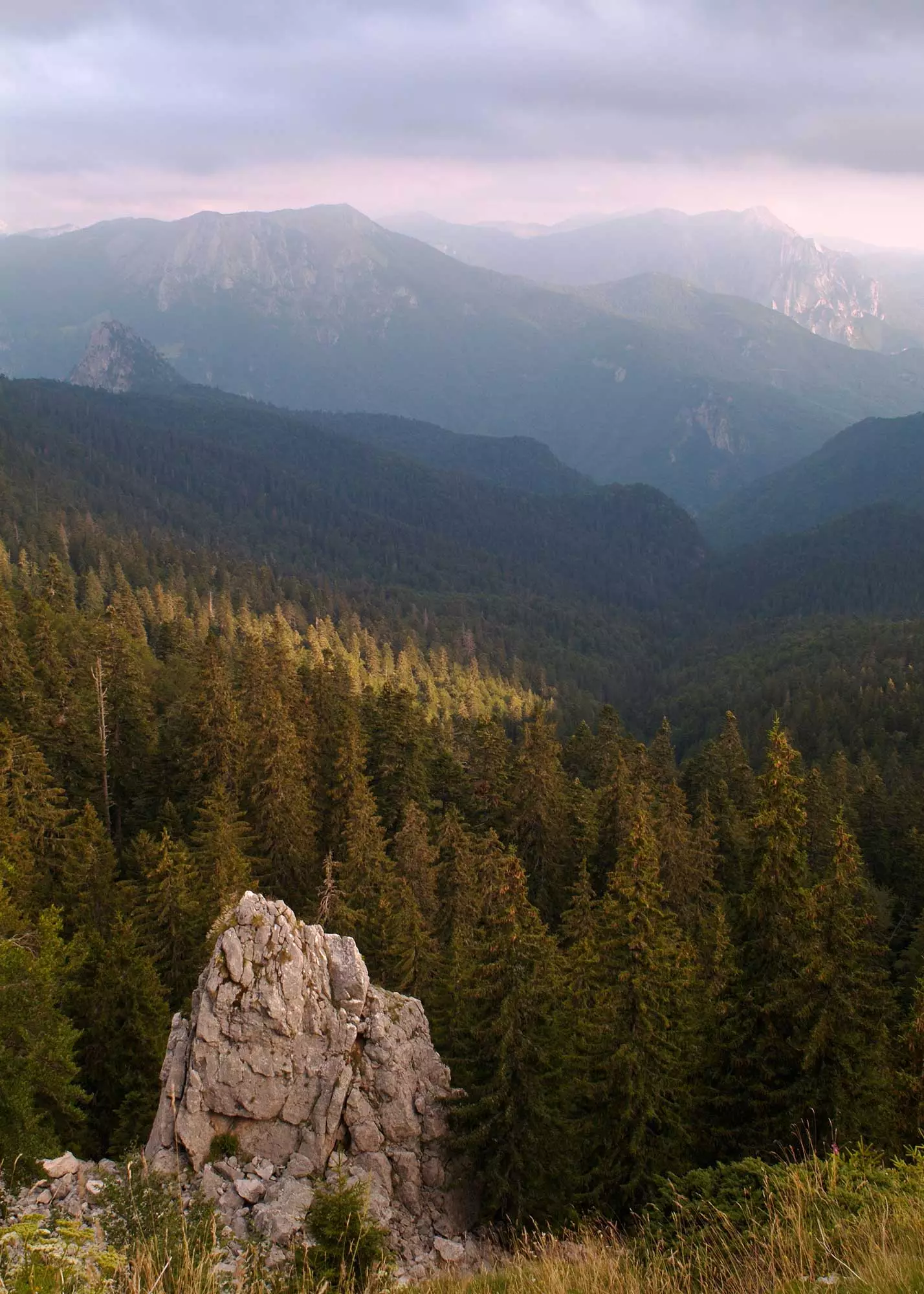
The Perucica forest boasts of being one of the best preserved on the European continent.
the jewel of the Republika Srpska , as the park is known, it is bounded by the Piva, Drina and Neretva rivers and crosses to the Montenegrin border . Glacial lakes, canyons, forest, grasses, animals and mountains
In this idyllic setting, the Battle of Sutjeska, also known as Operation Schwarz (carried out between May 15, 1943 and June 16 of the same year), took place. It was an attack by the Axis powers against the Yugoslav partisans that ended in failure. To remember the anniversary, in 1971, an impressive sculpture was built, designed by Miodrag Živković, and intended to show the struggle between the two blocs.
While a visit to the sculpture and memorial is a must, probably the most popular activity in Sutjeska National Park is the walk to Lake Trnovacko, already in Montenegro . It is an easy walk of about six hours (round trip) that can be done if you are in a certain physical shape. The route leads to the lake, already in Montenegro (you have to take your passport, because when you arrive, a ranger asks for it and you have to show it), which is shaped like a heart . There, the traveler will be captivated by its turquoise waters and the mountains that surround it.
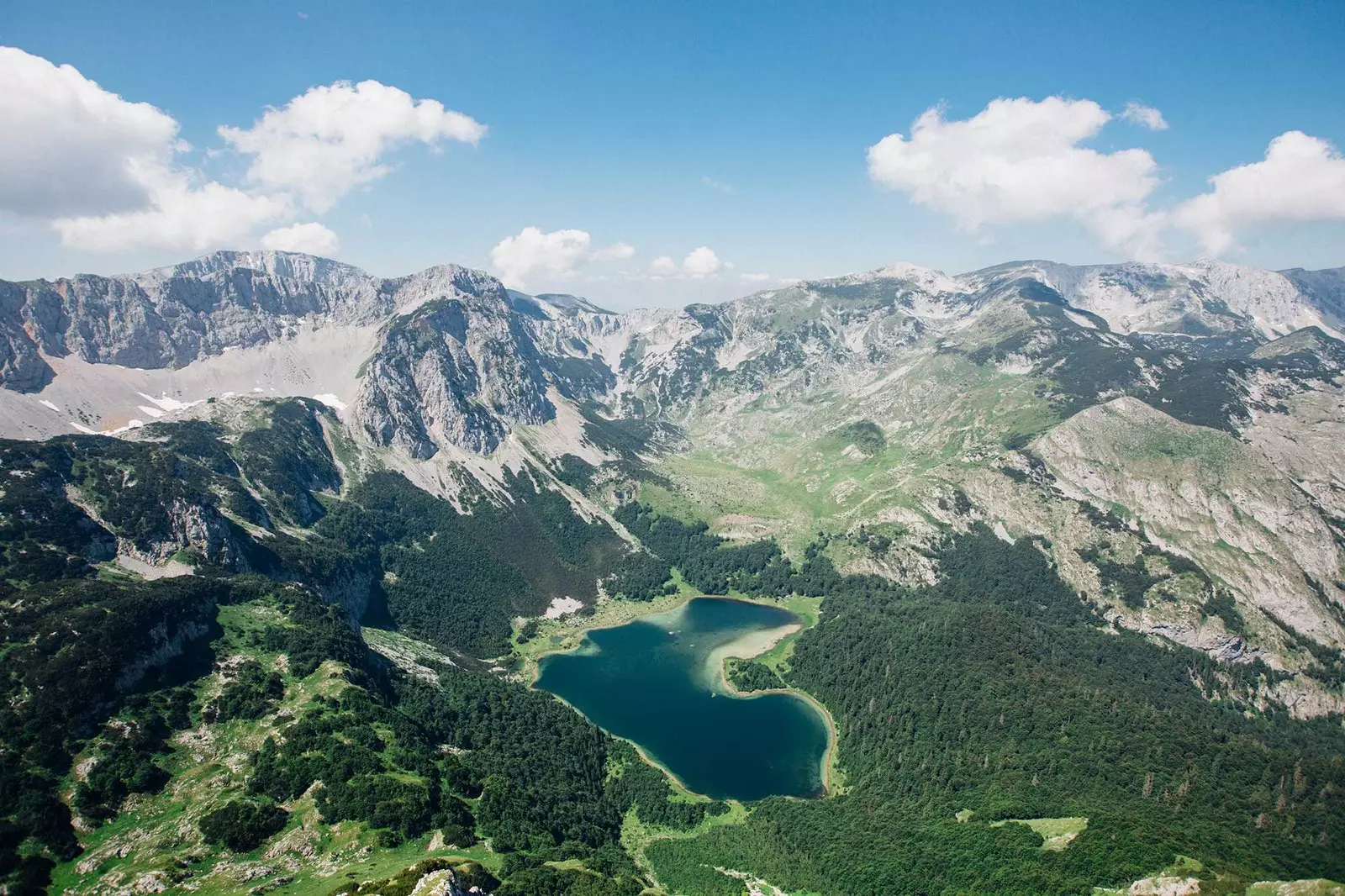
The heart shape of Lake Trnovacko is what makes it one of the most peculiar.
If you are fitter and have done some peak, you can try to climb the Maglić , but you have to go well equipped, since on one of the ascent routes there are a couple of sections where you have to climb. It is essential, before the ascent, to ask about the weather conditions at the park's information service.
In Tjentište , the town to access Sutjeska, there are different accommodation options. **The cheapest is to stay at the Kamp Sutjeska **, but if you prefer a little more comfort, the traveler can stay at one of the small hotels in the area. There is also the possibility of staying in Foča, the nearest town (despite the fact that it has little charm and it is always more comfortable to sleep in the park) .
The most surprising thing about the park is the contradictory information that the traveler finds. The locals in the area will give varied information and the most accurate option is to go to the information point (in front of the monument to the battle). And the most important thing: to go you need your own vehicle.
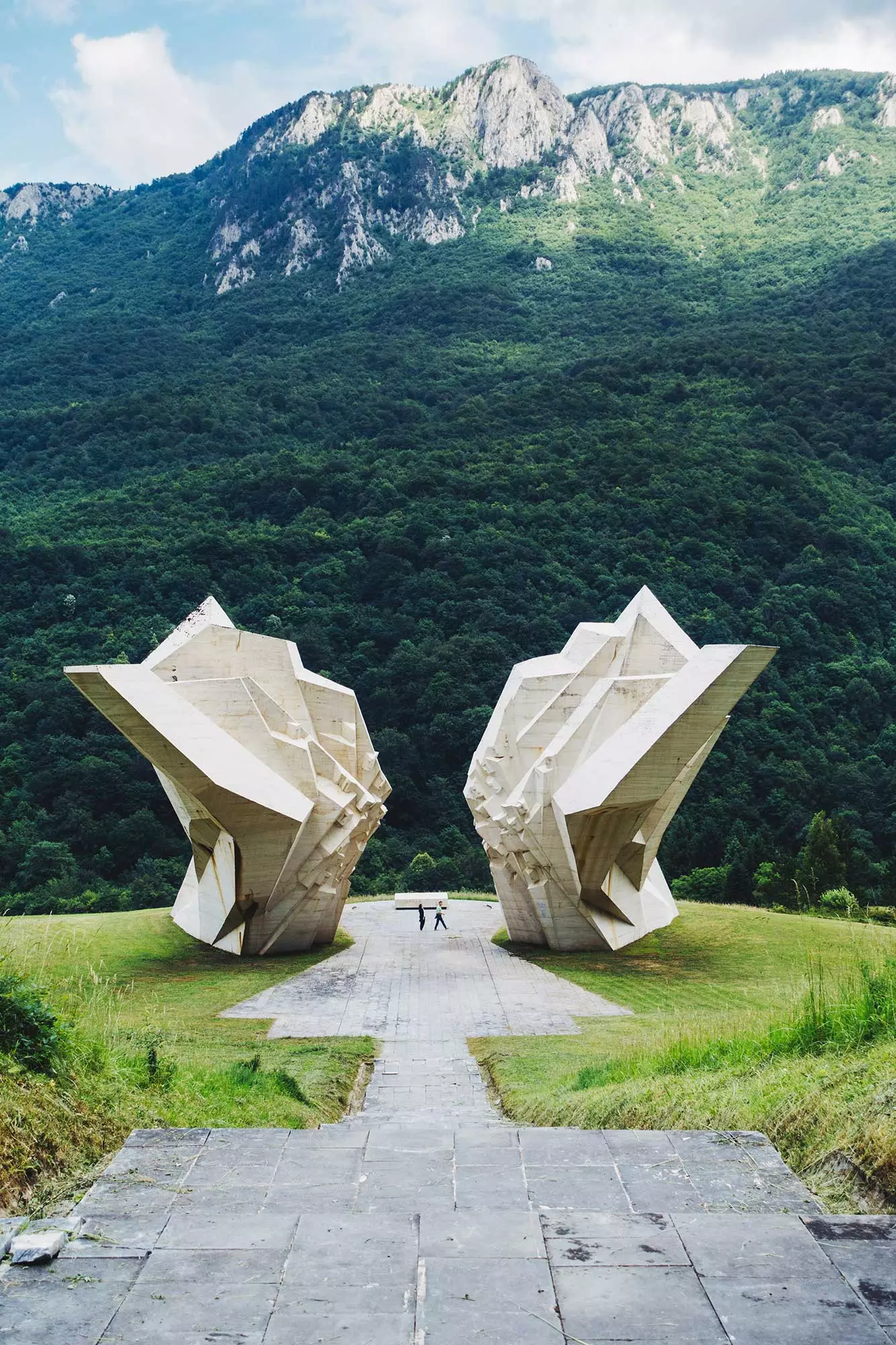
With the modern sculpture of Miodrag Živkovi? there is a union between innovation and tradition.
VISEGRAD, THE CHARM OF THE BRIDGE
Those who have read (and those who haven't too) A Bridge over the Drina, by Nobel Prize winner Ivo Andrić, will suffer from Stendhal Syndrome when they stand before the bridge that gives the famous novel its name. In the city of Visegrad (a couple of hours from Sarajevo) and crossing the Drina is one of the most famous and beautiful bridges in the world , built in the 16th century, between 1571 and 1577, under the orders of the architect of the Ottoman empire Sinan and commissioned by the great Turkish vizier Mehmed Pashá Sokolovic.
The bridge symbolizes the ties between East and West and not only inspired Ivo Andrić to write his novel, but is also the protagonist of dozens of stories that are told in the area. Although Visegrad is not a city that stands out for its beauty, it is worth making a technical stop to admire the bridge and enjoy a cold beer during a summer night on one of the terraces near the river, from where one can be enthralled by the reflection of the bridge over the Drina.
If more time is available you can visit the Andrićgrad cultural complex , built in honor of the writer thanks to the patronage of the filmmaker Emir Kusturica.
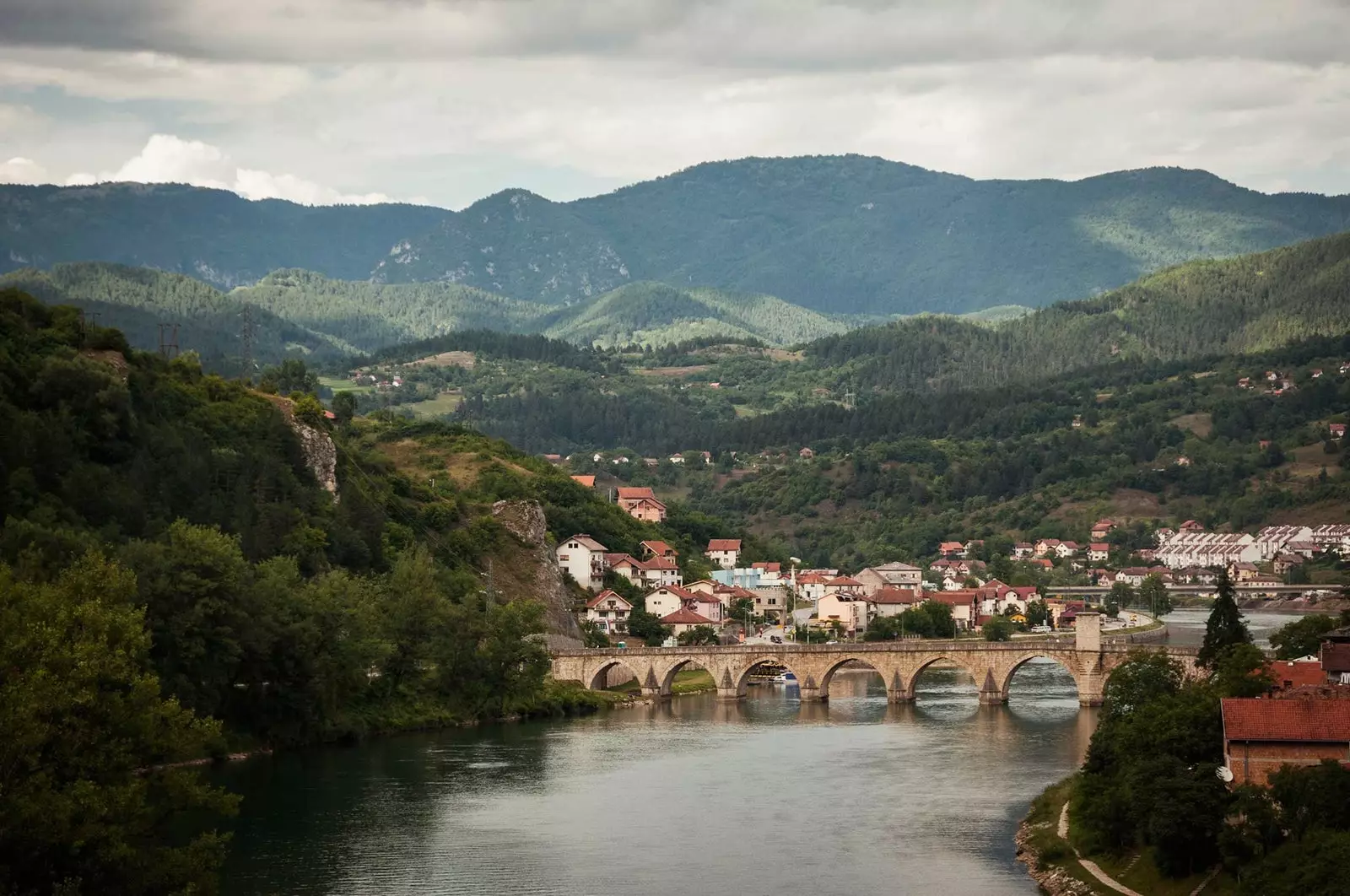
The Drina bridge is the protagonist of endless stories.
EAT LAMB IN JABLANICA
If you are not vegetarian or vegan, stop in Jablanica (just an hour and a half from Sarajevo and on the way to Mostar) eating lamb is a must . One of the most emblematic restaurants with dreamlike views over the Neretva River is the ** Zdrava voda , with affordable prices and traditional food **. It is on the road and can be distinguished because there are usually cars and some buses in the parking lot. The restaurant is huge and the lamb is bought by kilos . It is recommended to accompany it with a salad.
Once there, you can take the opportunity to see the Jablanica Bridge, collapsed over the Neretva during World War II . What you can see is a reproduction that was blown up to record the movie The Battle of Neretva, shot in 1969, directed by Veljko Bulajić and starring Yul Brinner and Orson Welles.
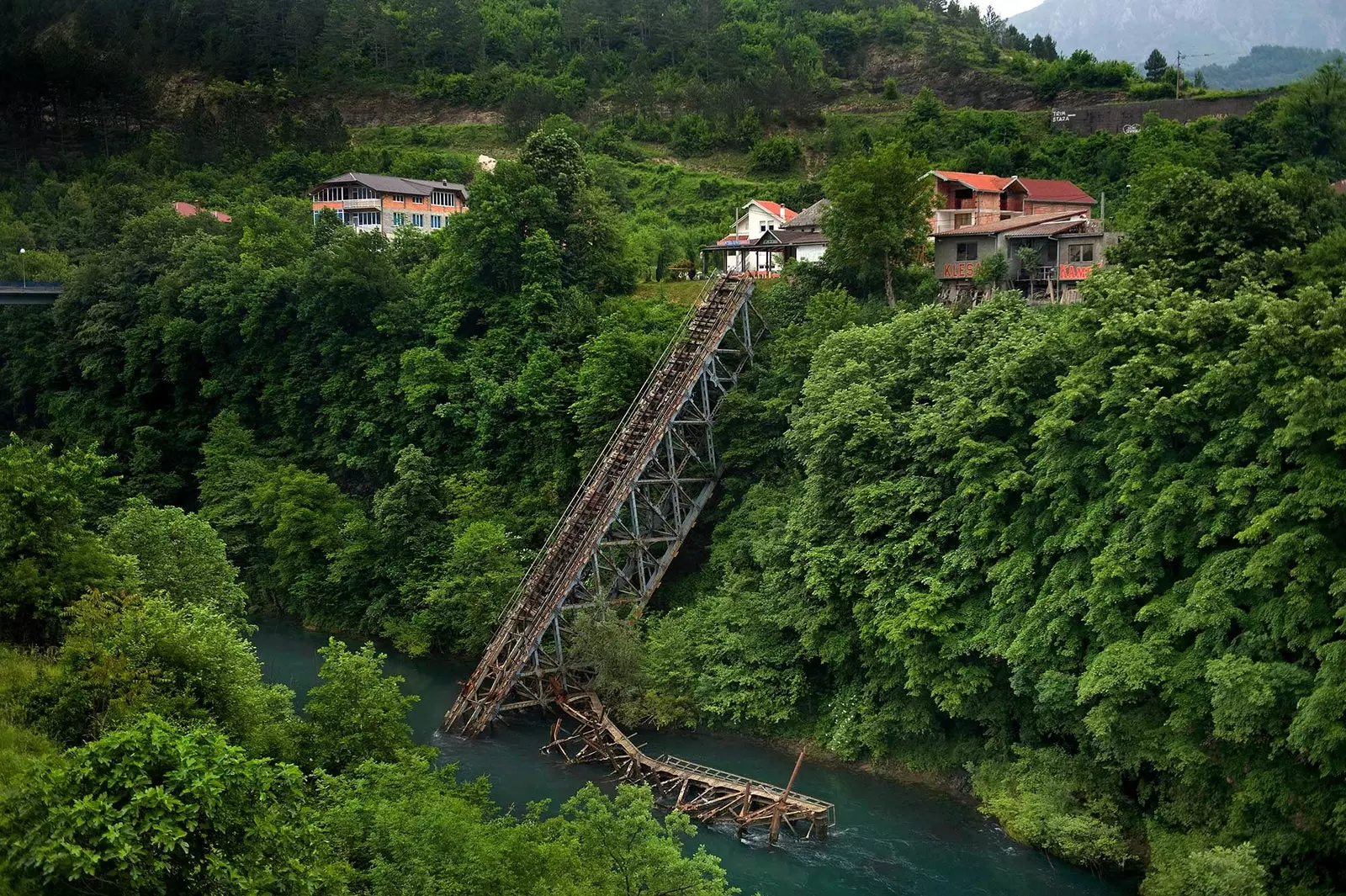
The Jablanica Bridge has also played a role in some works.
The bridge was very important, as German troops used it to transport supplies and weapons, until Marshal Joseph Broz Tito, head of state of Yugoslavia, dynamited it in 1943. You can see it from above or walk down a riverside path , from where some spectacular photographs are obtained.
SREBRENICA DOESN'T FORGET
Finally, to know the true scope of the war and the horror in which Bosnia was plunged in the nineties, you must visit Srebrenica, epicenter of one of the most important massacres (legally identified as genocide) of the 21st century (the largest mass murder in Europe since the second world war).
Between July 6 and 25, 1995 , the troops of the Republika Srpska, under the command of Ratko Mladić and the orders of Radovan Karadžić, murdered more than 8,000 men and boys before the impassive gaze of the United Nations, which had declared the area a "safe area". Even today not all the bodies have been identified, which were scattered throughout the region.
It takes time and serenity to visit the Srebrenica-Potočari Memorial Center and Cemetery , where the bodies that are still being found are buried. In front of the cemetery, across the road, is the base from which the United Nations troops operated. There are several photographic exhibitions, all of them with very hard images.
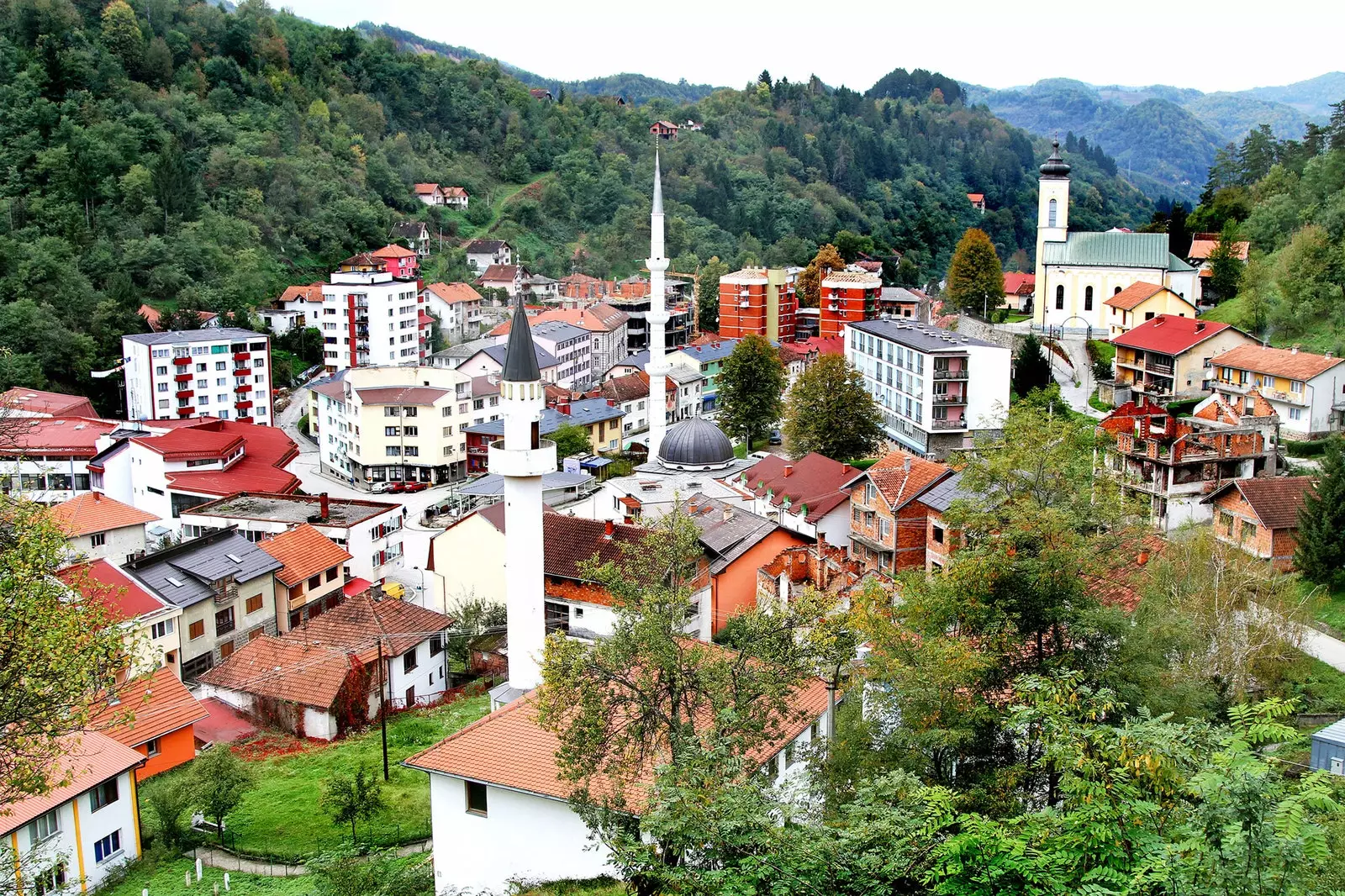
Srebrenica or the importance of memory
